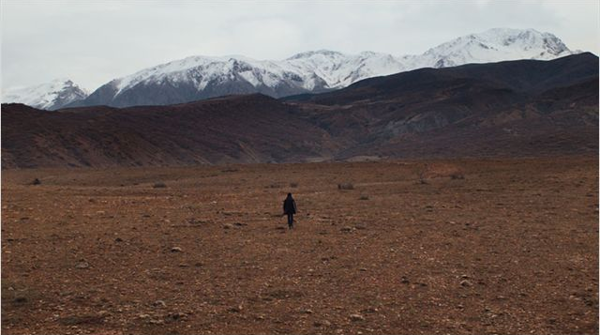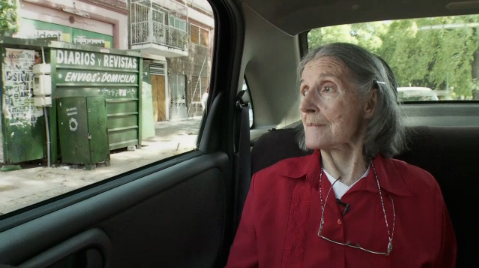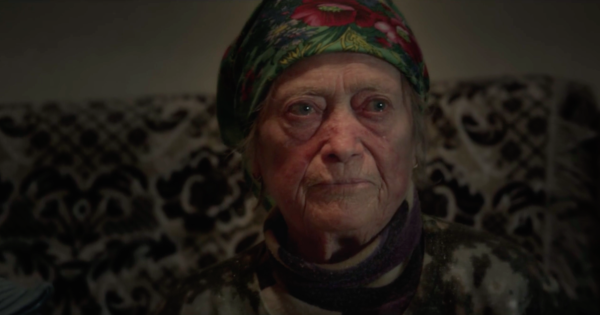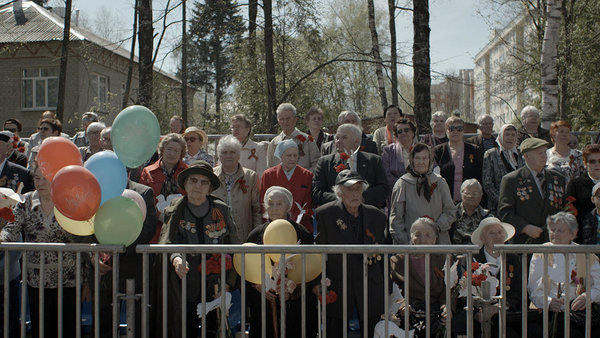Dealing with the past March 14, 2016
Liina Rajaveer, Laura Valli
In a mere two weeks time World Film Festival 2016 will take off in Tartu. As in previous years, this year’s festival too will allow the visitors to gain novel perspectives on a variety of issues. Although all of the films deal with human life in its complexity, there are four topics that are given more emphasis this time. The issues that define this year’s programme are memory, food, visual methods in anthropology and family. Here, we would like to give a preliminary overview of the films grouped under the subcategory ‘Postmemory’.
Memory is a recollection of an event. The capacity for remembering is partly what makes us human, as our current being is formulated through our interpretation of the past experience. Remembering requires conscious work. Social or collective memory as an interdisciplinary phenomenon has been in the focus of different disciplines for decades, only to become one of the central concepts around 2000s. Post-memory is a certain subcategory of memory used to describe inherited and indirect reminiscences which bear the cultural trauma and experiences of the previous generation(s).
These movies make it evident that the past is not a given, but there is always the potential for multiple interpretations. Past is important because our perspective on the present and our outlook for the future is always influenced by what we have experienced before. Marianne Hirsch among others uses the term ‘post-memory’ to refer to memories of primarily traumatic events that the person has not experienced him- or herself, but nevertheless ‘remembers’ very vividly through the stories of the generation before. But this is deeply problematic. As Hirsch warns, ‘to grow up with overwhelming inherited memories, to be dominated by narratives that preceded one´s birth or one´s consciousness, is to risk having one´s own life stories displaced, even evacuated, by our ancestors.’ (1)
All of the films assembled under this theme deal with cultural disruptions on the micro-level, representing mostly personal stories within historical narratives. They demonstrate how individuals attempt to situate their own lives within the wider historic and cultural context. Some of them do so voluntarily, others feel the external obligation. From what is best left forgotten (Stony Paths) to what and how we want to remember (Battles), these documentaries go into the different memory practices, reconstruction and functioning of the collective memory and meaning-making processes.
But why to remember? Memories add richness and depth to the daily lives of people. A still frame of a location becomes something much more after being told the stories associated with that place. Yet there is rarely only one story to be told, but rather multiple competing narratives. To go on with their lives, individuals need to make at least some sense of it all, they need to understand what happened before. Finding one’s
roots seems to be crucial to the process of identity construction, as Stony Paths (2015) and Time Suspended (2015) explicitly demonstrate. Stony Paths, a crowd-funded documentary by a French movie-maker Arnaud Khayadjanian, follows in the footsteps of the author’s ancestors who escaped the Armenian genocide in Turkey in 1915. Khayadjanian is trying to investigate the suppressed history that the Turkish government is still finding hard to admit. Even the villagers do not always talk, but this is a meaningful silence, not a sign of ignorance or unawareness.
Making sense of a personal, but distant past and the events that implicitly shape understanding is also important to the Mexican-Argentine director Natalia Bruschtein, whose Time Suspended beautifully depicts the struggle to remember while memory starts to fade. The experience of her grandmother, survivor of the Argentine massacres is depicted in a paradox: the woman, who has put an immense effort into remembering, is starting to slowly lose her memory, while her grand-daughter is trying to gather the moments of lucidity. In a way, these very personal films provide a more general understanding of how different stories of the past provide a context for experiencing the time being. Similarly to the Turkish villagers in Stony Paths, the current inhabitants of Mărculești, Moldova question the need to elaborate on tragic past events in Matthew Mishory’s Absent (2015). “Why do you ask about the past but not the present?” one woman reacts to the film-maker’s enquiry. The emphasis on the importance of the present and the future helps the people to go on, while the past still remains a silent burden. The dissonance between the bygone and the now is too apparent, being a constant reminder of the cultural disruption.
While the first three films concentrate on the past in the present of a certain place, the Belgian documentary Battles (2015, director Isabelle Tollenaere) takes us on a journey through four countries and four different representations of war. The viewer is presented with various objects that seem somewhat out of place: they are items related to war that are now used in a different and disconcerting manner.
We are shown individuals who feel the burden of remembering events that have happened before and to people other than themselves. The new generation is not so emotionally attached to the dark past, yet cues in the environment and references from the people who surround them do not allow to simply forget. They all need to find a way to come into terms with what has been before. Problematic events are often left out from the official histories, being considered too complicated or painful to deal with. But is it true that whatever remains unsaid also remains unsolved? How to find reconciliation? Can we learn from the past without openly discussing it? Is it possible to simply set the past aside? These authors seem to suggest that the past events always influence the present and the future. This might seem to suggest that we forever remain prisoners of the past. But instead of supporting fatalism, these stories can also be viewed as empowering, as there is always room for reinterpretation.
(1) http://www.postmemory.net/
Sources:
https://www.filmdoo.com/blog/2016/01/14/documentary-review-absent-2015/
http://cineuropa.org/nw.aspx?t=newsdetail&l=en&did=299877
http://www.avoir-alire.com/les-chemins-arides-la-critique-du-film
http://www.critikat.com/actualite-cine/critique/les-chemins-arides.html
http://www.worldfilm.ee/films#281507



